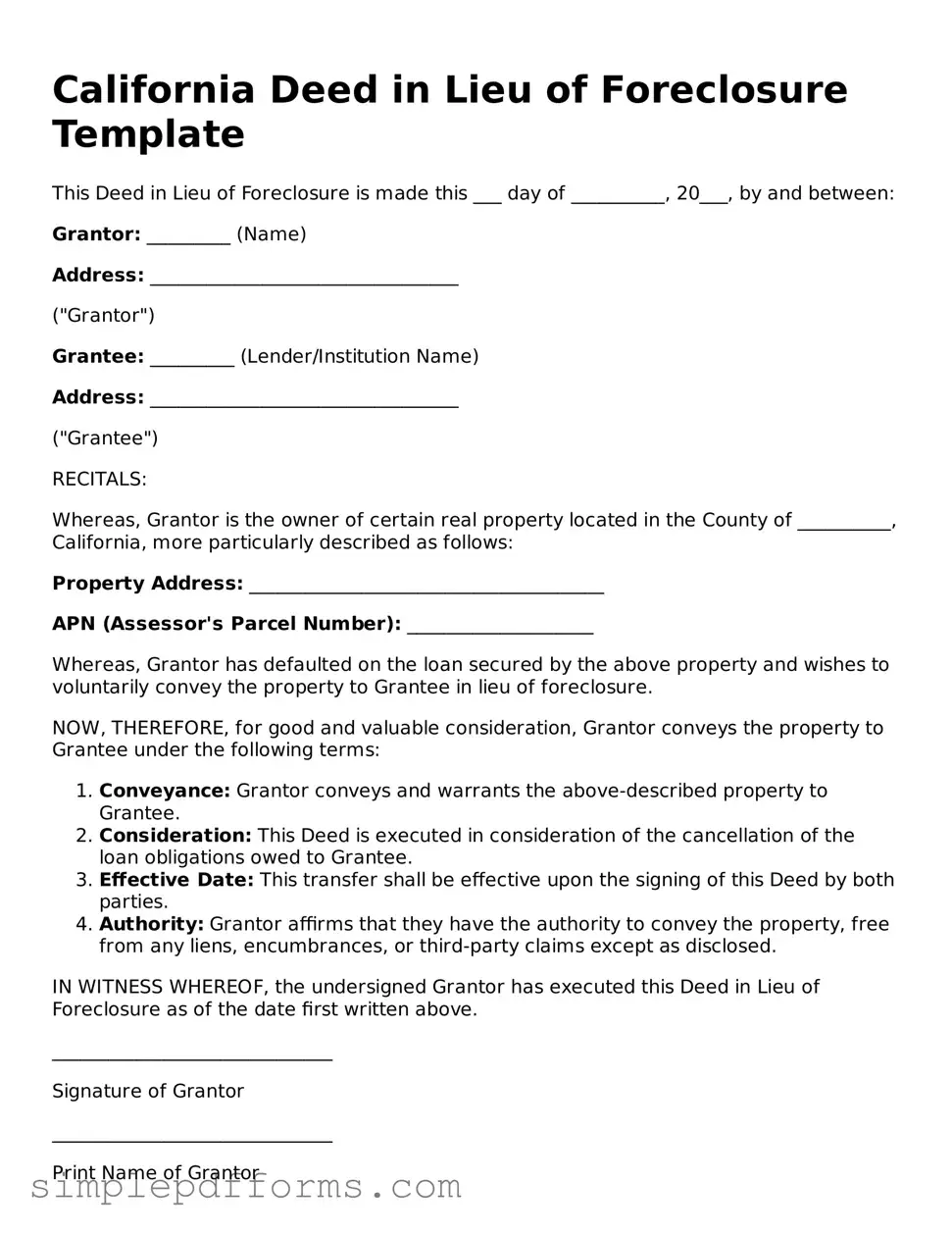California Deed in Lieu of Foreclosure Template
This Deed in Lieu of Foreclosure is made this ___ day of __________, 20___, by and between:
Grantor: _________ (Name)
Address: _________________________________
("Grantor")
Grantee: _________ (Lender/Institution Name)
Address: _________________________________
("Grantee")
RECITALS:
Whereas, Grantor is the owner of certain real property located in the County of __________, California, more particularly described as follows:
Property Address: ______________________________________
APN (Assessor's Parcel Number): ____________________
Whereas, Grantor has defaulted on the loan secured by the above property and wishes to voluntarily convey the property to Grantee in lieu of foreclosure.
NOW, THEREFORE, for good and valuable consideration, Grantor conveys the property to Grantee under the following terms:
- Conveyance: Grantor conveys and warrants the above-described property to Grantee.
- Consideration: This Deed is executed in consideration of the cancellation of the loan obligations owed to Grantee.
- Effective Date: This transfer shall be effective upon the signing of this Deed by both parties.
- Authority: Grantor affirms that they have the authority to convey the property, free from any liens, encumbrances, or third-party claims except as disclosed.
IN WITNESS WHEREOF, the undersigned Grantor has executed this Deed in Lieu of Foreclosure as of the date first written above.
______________________________
Signature of Grantor
______________________________
Print Name of Grantor
______________________________
Date
______________________________
Signature of Grantee
______________________________
Print Name of Grantee
______________________________
Date
This Deed is governed by the laws of the State of California and takes effect upon completion of the signing by both parties.
